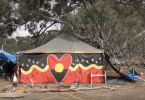Creative Australia – the first document to unpack the Australian Arts, and Creative Sectors, for the first time in 19 years, sees a shake-up of the way Arts Policy is seen from the ground up.
Since the release of Creative Nation in 1994, this is the second time in Australia’s history that a Federal Government has looked at an all encompassing Arts Policy.
Thematically, the policy asserts that “Culture is not created by government, but enabled by it,” and it’s this attitude that has been welcomed by a majority of the Arts Sector.
Crikey’s Ben Eltham labelled the policy as a “big win for the arts on the whole,” when talking to the City Journal earlier this week.
“What this policy sets out to do is look past the narrow, sectional interests of art form vs art form, to propose Australia Council reform.
“That would break down the silos of board structures, and also a broader whole government approach to cultural policy. Cultural policy has been in desperate need of an update from a 1970s worldview, where culture really equalled a small palate of Western Art Forms. This is a step towards the government recognising the diversity and the ferment of culture that goes on in our society,” he said.
Articulating a mix of both pragmatic and idealistic themes from the outset, the document aims to set out a roadmap for the artist of the 21st century.
The Australia Council at an executive level will be business driven, while artistically, peer assessors will be increased to 250 per year.
With a funding boost of $75.3 million over four years, artists will be given greater direct access to funding, boosting the Council’s discretionary grants by another 30 per cent.
“That will particularly benefit individual artists and small to medium Arts organisations,” Eltham said.
“There will be a trickle down from this funding to independent artists, but it’s not going to be a major impact on the broader cultural industries in this country, simply because most artists aren’t dependent on grants: they’re small business owners.
“I’m a good example. I’m a writer and a journalist, and I haven’t received an Arts grant for my writing for many years. I sell my services on an open market.”
While Melbourne is home to some of the country’s most acclaimed cultural organisations, engagement with a revitalised Council is hoped to foster greater opportunities for artists at all points of development.
Local hubs like the Malthouse Theatre are to be one of six institutions handpicked by the Arts Ministry to be given access to a direct funding pool of $9.3 million.
The policy is pegged to the Gillard Government’s wider reform agenda.
The NBN, Education Reform, the Asian Century, and the recognition of Indigenous Culture are all the big-ticket items that were alluded to in the policy.
But what none could have forseen in the days after the policy’s release was the sudden demise of Minister Crean, now replaced with former Environment Minister, Tony Burke.
Only time will tell to see whether Minister Crean’s Arts Policy will be implemented in full.
THE FUNDING BREAKDOWN:
Australia Council: $75.3 m – 2013-17
Art Start Program: $9.7 m – 2013-14
(art graduate bridging initiative)
Creative Partnerships Australia: $8.6 m – initial
Creative Young Stars Program: $8.1 m – MP Grant
Promotion of local Contemporary Music: $3 m – 2013-17
Top-up of Elite Training Institutions: $20.8 m – 2013-17
Indigenous Languages: $14 m – 2013-17
Interactive Games Fund: $20 m – 2013-16
Major Performing Arts Companies: $9.3m – targeted funding pool, including:
Barngarra Dance Theatre (NSW)
Belvoir Theatre (NSW)
Malthouse Theatre (VIC)
Circus Oz (VIC)
Black Swan State Theatre Company (WA)
West Australian Ballet (WA)
Screen Production: $10 m
FROM THE CURATOR’S EYE:
Isobel Crombie, Assistant Director of Curatorial and Collection Management at the NGV, told City Journal of the policy’s scope for cross-pollination between individual artists and larger cultural organisations.
“On balance, the policy’s done two really good things,” she said.
“One of them is to look at the funding and how that’s organised: it interrogates how the pie gets divided up. Secondly, what it’s done is talked about creativity being central to Australian life.”
“If you go to the hard facts of the policy, and the money they’ve set aside for it, that’s the money that will generate a whole lot of projects. The way that it’s critically looked at the Asia-Pacific, Indigenous Languages, and Regional Australia are all very sensible things to target.”
“Creativity expresses itself just as much as an industry as it does as an art. I think one of the great lessons people can learn from the arts, it’s that art awakens something creative in them, too. And it doesn’t matter what field they’re in. It’s good to see that embedded in a government document.”
“The policy puts Arts on the political agenda, and from that, I think it spreads out the appreciation of the Arts sector and the role that it can play. It’s not peripheral – it’s role is implicit in the rich, complex life of Australia.”
“I just hope that a document like this doesn’t get lost in transition.”
CARE TO FIND OUT MORE?
Watch this episode of the ABC’s Artscape detailing the National Cultural Policy Discussion paper.
Listen to Radio National’s Books and Arts Daily unpacking ‘Creative Australia’








